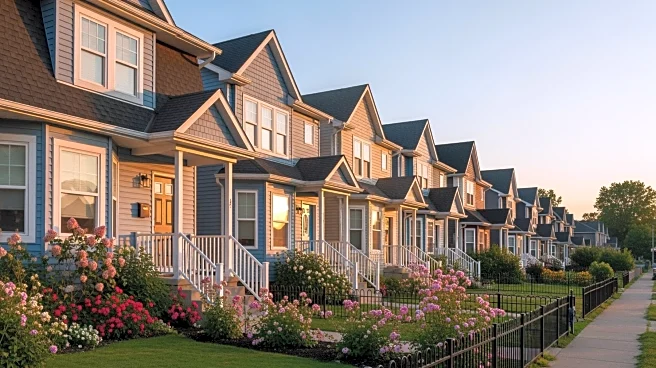What's Happening?
A recent analysis of cross-market demand data from Realtor.com reveals that individuals from major metropolitan areas are increasingly looking to purchase homes in Lancaster, Pennsylvania. The data, compiled
by Stacker, highlights the percentage of online views directed towards Lancaster from various cities, indicating a growing interest in relocating to this area. The top cities showing interest include New York, Philadelphia, and Washington, DC, with New York leading at a 24.4% view share. This trend comes amidst a nationwide housing market characterized by a scarcity of available homes, which has kept prices elevated despite a slowdown in sales over the past year. The National Association of Realtors reported that 97% of homebuyers utilized online platforms for house hunting in 2021, underscoring the importance of digital tools in navigating the current market.
Why It's Important?
The increased interest in Lancaster from residents of major metropolitan areas could have significant implications for the local housing market and economy. As demand from larger cities grows, Lancaster may experience a rise in property values and increased competition among buyers, potentially making it more challenging for local residents to purchase homes. This trend reflects broader shifts in the housing market, where individuals are seeking more affordable living options outside of densely populated urban centers. The movement of homebuyers from cities like New York and Philadelphia to Lancaster could also lead to demographic changes and influence local infrastructure and services, as new residents bring different needs and expectations.
What's Next?
As the trend of relocating to areas like Lancaster continues, local policymakers and real estate professionals may need to address the challenges and opportunities presented by this influx of interest. Strategies could include increasing the availability of housing to meet demand, ensuring that infrastructure can support a growing population, and maintaining affordability for existing residents. Additionally, the ongoing evolution of remote work may further drive interest in suburban and rural areas, as individuals seek more space and a different quality of life. Monitoring these developments will be crucial for stakeholders aiming to balance growth with community needs.
Beyond the Headlines
The shift in homebuying interest towards Lancaster and similar areas may reflect broader cultural and lifestyle changes, as individuals reassess their priorities in the wake of the pandemic. The desire for more space, a quieter environment, and potentially lower living costs are factors influencing these decisions. This trend could also impact local businesses and services, as new residents bring diverse preferences and spending habits, potentially revitalizing certain sectors while challenging others to adapt.











